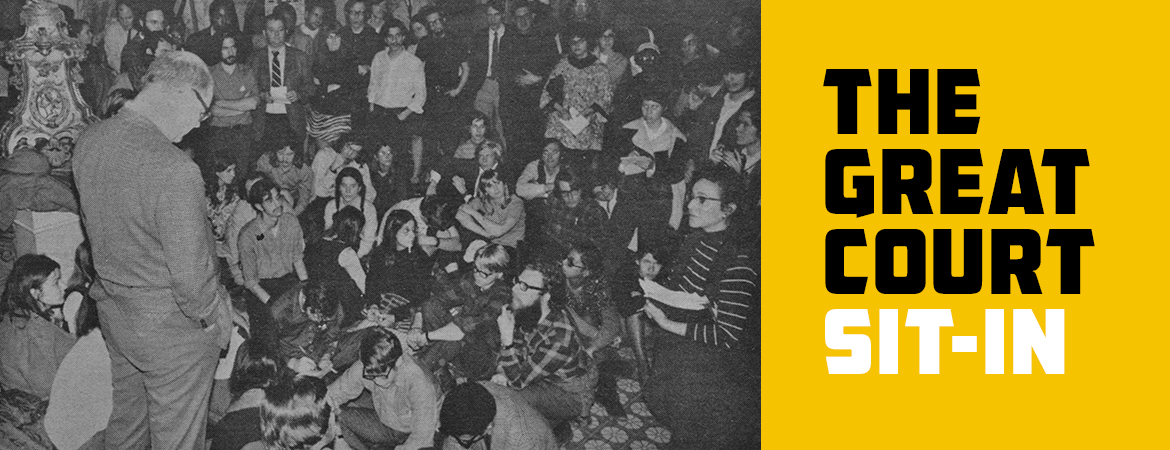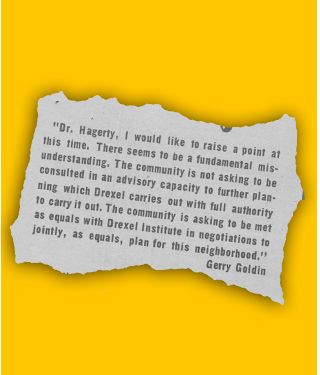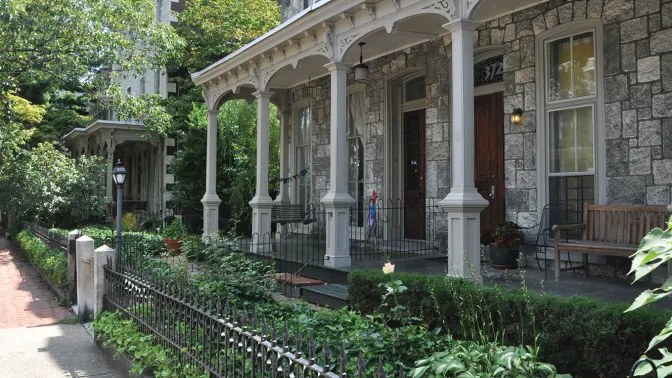
The Great Court Sit-in
Rob Sieczkiewicz
On April 5, 1968, the day after Dr. Martin Luther King was assassinated, Drexel President W.W. Hagerty canceled classes at the Drexel Institute as a sign of respect for Dr. King and his ideals.
President Hagerty often noted how Drexel faculty used their scientific and technical expertise to address urban problems, such as air pollution. But the specific problems facing African-Americans that Dr. King decried in his speeches — like poor housing, inadequate schools and lack of jobs — had not previously seemed urgent to the leadership of the Drexel Institute.

In 1969, Drexel planned to build a new women’s dormitory on Arch Street, near Kelly Hall (then a men’s dorm), with more buildings to follow. The residents of Powelton, alarmed at the threat of their houses being demolished, protested the expansion. Residents, joined by Drexel students, began to occupy the Great Court in the 1960s phenomenon known as a sit-in. A battle of words — and of lawyers — was waged.
Drexel soon awakened to its responsibility to its neighbors, creating an Office of Community Affairs in 1970. The Office sought to establish a working relationship with the community leaders of Powelton, Mantua and Belmont. It worked to address the educational, employment and recreational needs of these communities, which included about 33,000 Philadelphians, a third of them children. Many of the adults in these neighborhoods had not completed high school, and few attended college.
The Office of Community Affairs launched a “Neighborhood Youth Corps,” employing 60 young people on campus. The Office organized recreational athletic leagues and a Children’s Repertory Theatre. Drexel also launched Project M.A.P.: Motivation, Application, Preparation — to give neighborhood high school students a learning-friendly atmosphere to prepare them for study at Drexel.
For nearly 45 years, while there have certainly been bumps in the road, Drexel has worked with its neighbors to plant the seeds of a better Philadelphia.

